Related Research Articles

The Convention on Biological Diversity (CBD), known informally as the Biodiversity Convention, is a multilateral treaty. The convention has three main goals: the conservation of biological diversity ; the sustainable use of its components; and the fair and equitable sharing of benefits arising from genetic resources. Its objective is to develop national strategies for the conservation and sustainable use of biological diversity, and it is often seen as the key document regarding sustainable development.

Protected areas or conservation areas are locations which receive protection because of their recognized natural, ecological or cultural values. There are several kinds of protected areas, which vary by level of protection depending on the enabling laws of each country or the regulations of the international organizations involved. Generally speaking though, protected areas are understood to be those in which human presence or at least the exploitation of natural resources is limited.
This is an index of conservation topics. It is an alphabetical index of articles relating to conservation biology and conservation of the natural environment.
Rio Convention relates to the following three conventions, which were agreed at the Earth Summit held in Rio de Janeiro in June 1992.
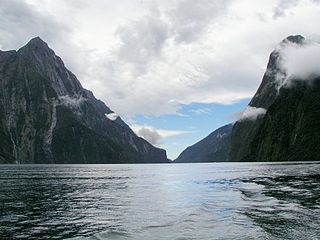
Marine protected areas (MPA) are protected areas of seas, oceans, estuaries or in the US, the Great Lakes. These marine areas can come in many forms ranging from wildlife refuges to research facilities. MPAs restrict human activity for a conservation purpose, typically to protect natural or cultural resources. Such marine resources are protected by local, state, territorial, native, regional, national, or international authorities and differ substantially among and between nations. This variation includes different limitations on development, fishing practices, fishing seasons and catch limits, moorings and bans on removing or disrupting marine life. In some situations, MPAs also provide revenue for countries, potentially equal to the income that they would have if they were to grant companies permissions to fish.
Sustainable forest management (SFM) is the management of forests according to the principles of sustainable development. Sustainable forest management has to keep the balance between three main pillars: ecological, economic and socio-cultural. Successfully achieving sustainable forest management will provide integrated benefits to all, ranging from safeguarding local livelihoods to protecting biodiversity and ecosystems provided by forests, reducing rural poverty and mitigating some of the effects of climate change.

A biodiversity action plan (BAP) is an internationally recognized program addressing threatened species and habitats and is designed to protect and restore biological systems. The original impetus for these plans derives from the 1992 Convention on Biological Diversity (CBD). As of 2009, 191 countries have ratified the CBD, but only a fraction of these have developed substantive BAP documents.
The Global Strategy for Plant Conservation (GSPC) is a program of the UN's Convention on Biological Diversity founded in 1999. The GSPC seeks to slow the pace of plant extinction around the world through a strategy of 5 objectives.
Canada's Biodiversity Outcomes Framework was approved by Ministers responsible for Environment, Forests, Parks, Fisheries and Aquaculture, and Wildlife in October 2006. It has been developed further to the Canadian Biodiversity Strategy, an implementation measure required under Article 6 of the United Nations Convention on Biological Diversity.
Canada's Biodiversity Convention Office (BCO) serves as National Focal Point for the United Nations Convention on Biological Diversity and the Canadian Biodiversity Strategy. BCO also provides a leadership role in the Biodiversity Conservation Working Group of the Commission for Environmental Cooperation and in the Conservation of Arctic Flora and Fauna (CAFF) working group of the Arctic Council.

The Biodiversity Indicators Partnership (BIP) brings together a host of international organizations working on indicator development, to provide the best available information on biodiversity trends to the global community. The Partnership was initially established to help monitor progress towards the Convention on Biological Diversity (CBD) 2010 Biodiversity target. However, since its establishment in 2006 the BIP has developed a strong identity not only within the CBD but with other Multilateral Environmental Agreements (MEAs), national and regional governments and other sectors. As a result, the Partnership will continue through international collaboration and cooperation to provide biodiversity indicator information and trends into the future.

The International Year of Biodiversity (IYB) was a year-long celebration of biological diversity and its importance, taking place internationally in 2010. Coinciding with the date of the 2010 Biodiversity Target, the year was declared by the 61st session of the United Nations General Assembly in 2006.
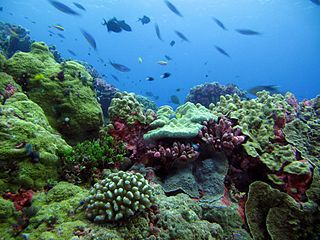
The World Database on Protected Areas (WDPA) is the largest assembly of data on the world's terrestrial and marine protected areas, containing more than 260,000 protected areas as of August 2020, with records covering 245 countries and territories throughout the world. The WDPA is a joint venture between the United Nations Environment Programme World Conservation Monitoring Centre and the International Union for Conservation of Nature World Commission on Protected Areas.
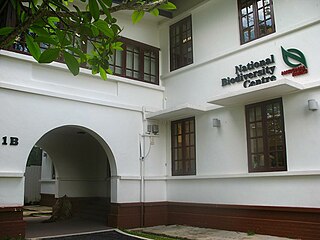
The National Biodiversity Centre is a branch of the National Parks Board and serves as Singapore's one-stop centre for biodiversity-related information and activities. It manages all available information and data on biodiversity in Singapore. Diverse biodiversity-related information and data are currently generated, stored and updated by different organisations and individuals. The National Biodiversity Centre will maximize the usefulness of such information and data by linking them in a single meta-database. Having complete and up-to-date information is crucial for many decision-making processes involving biodiversity. This hub of biodiversity information and data at the National Biodiversity Centre will also allow knowledge gaps to be better identified and addressed.
The United Nations General Assembly declared 2011–20 the United Nations Decade on Biodiversity. The UN Decade on Biodiversity serves to support and promote implementation of the objectives of the Strategic Plan for Biodiversity and the Aichi Biodiversity Targets, with the goal of significantly reducing biodiversity loss.

Jervis Bay Marine Park is a marine protected area established by the Government of New South Wales in 1998. and the current zoning plan has been in place since 1 October 2002. The marine park is approximately 210 km2 (81 sq mi) in area and spans over 100 km (62 mi) of coastline from Kinghorn Point in the north to Sussex Inlet. The marine park is zoned to conserve biological diversity in marine habitats and to provide a range of recreational and commercial activities.
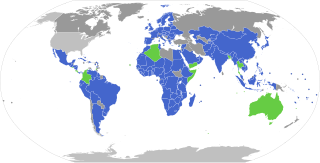
The Nagoya Protocol on Access to Genetic Resources and the Fair and Equitable Sharing of Benefits Arising from their Utilization to the Convention on Biological Diversity, also known as the Nagoya Protocol on Access and Benefit Sharing (ABS) is a 2010 supplementary agreement to the 1992 Convention on Biological Diversity (CBD). Its aim is the implementation of one of the three objectives of the CBD: the fair and equitable sharing of benefits arising out of the utilization of genetic resources, thereby contributing to the conservation and sustainable use of biodiversity. It sets out obligations for its contracting parties to take measures in relation to access to genetic resources, benefit-sharing and compliance.
Ecosystem-based adaptation (EbA) encompasses a broad set of approaches to adapt to climate change. They all involve the management of ecosystems and their services to reduce the vulnerability of human communities to the impacts of climate change. The Convention on Biological Diversity defines EbA as “the use of biodiversity and ecosystem services as part of an overall adaptation strategy to help people to adapt to the adverse effects of climate change”.
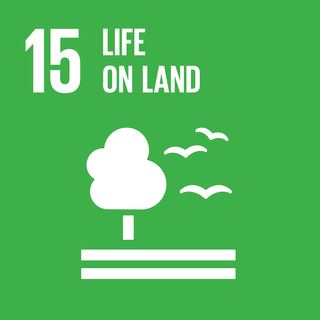
Sustainable Development Goal 15 is about Life on land. One of the 17 Sustainable Development Goals established by the United Nations in 2015, the official wording is: "Protect, restore and promote sustainable use of terrestrial ecosystems, sustainably manage forests, combat desertification, and halt and reverse land degradation and halt biodiversity loss". The Goal has 12 targets to be achieved by 2030. Progress towards targets will be measured by 14 indicators.

Sustainable Development Goal 14 is about "Life below water" and is one of the 17 Sustainable Development Goals established by the United Nations in 2015. The official wording is to "Conserve and sustainably use the oceans, seas and marine resources for sustainable development". The Goal has ten targets to be achieved by 2030. Progress towards each target is being measured with one indicator each.
References
- ↑ National Biodiversity Strategies and Action Plans (NBSAPs)
- ↑ Parties to the Convention on Biological Diversity
- ↑ Convention Article 6. General Measures for Conservation and Sustainable Use
- ↑ Canadian Biodiversity Strategy Archived 2007-02-06 at the Wayback Machine
- ↑ "2020 Biodiversity Goals and Targets for Canada" . Retrieved Jan 22, 2021.
- ↑ "Canada's conserved areas" . Retrieved Jan 22, 2021.
- ↑ Celebrating Biodiversity: Adaptive Planning and Biodiversity Conservation Archived 2007-09-27 at the Wayback Machine